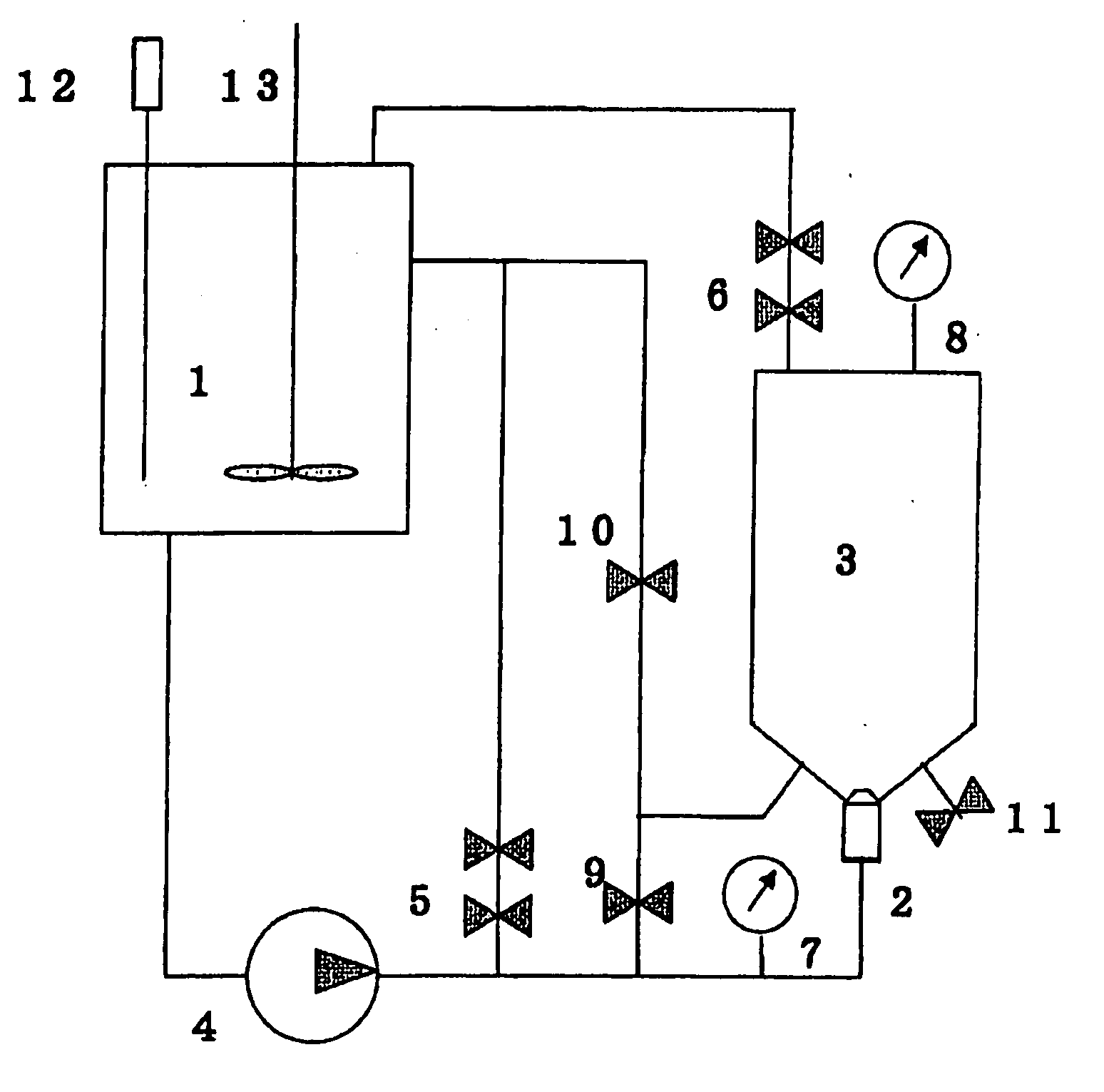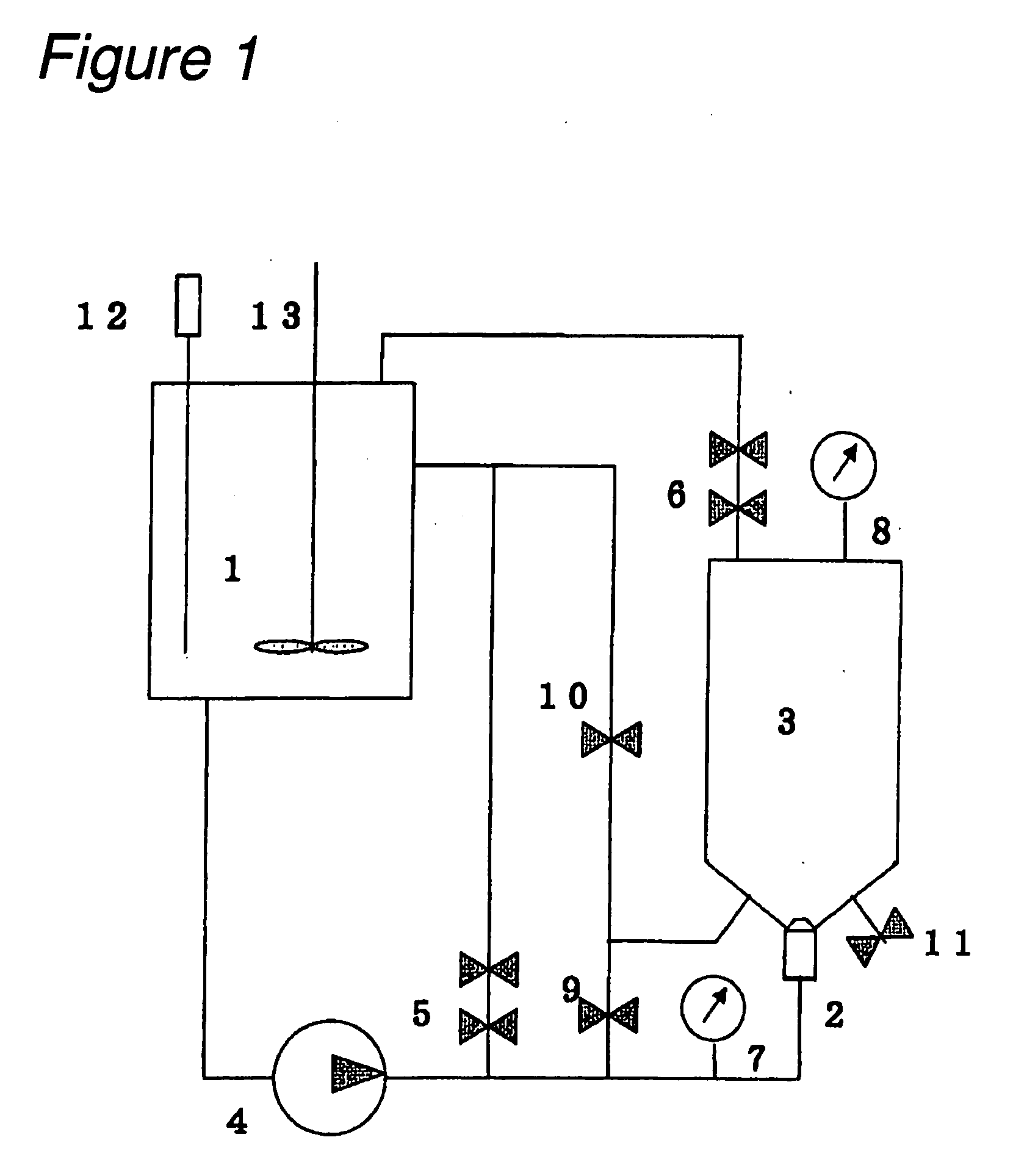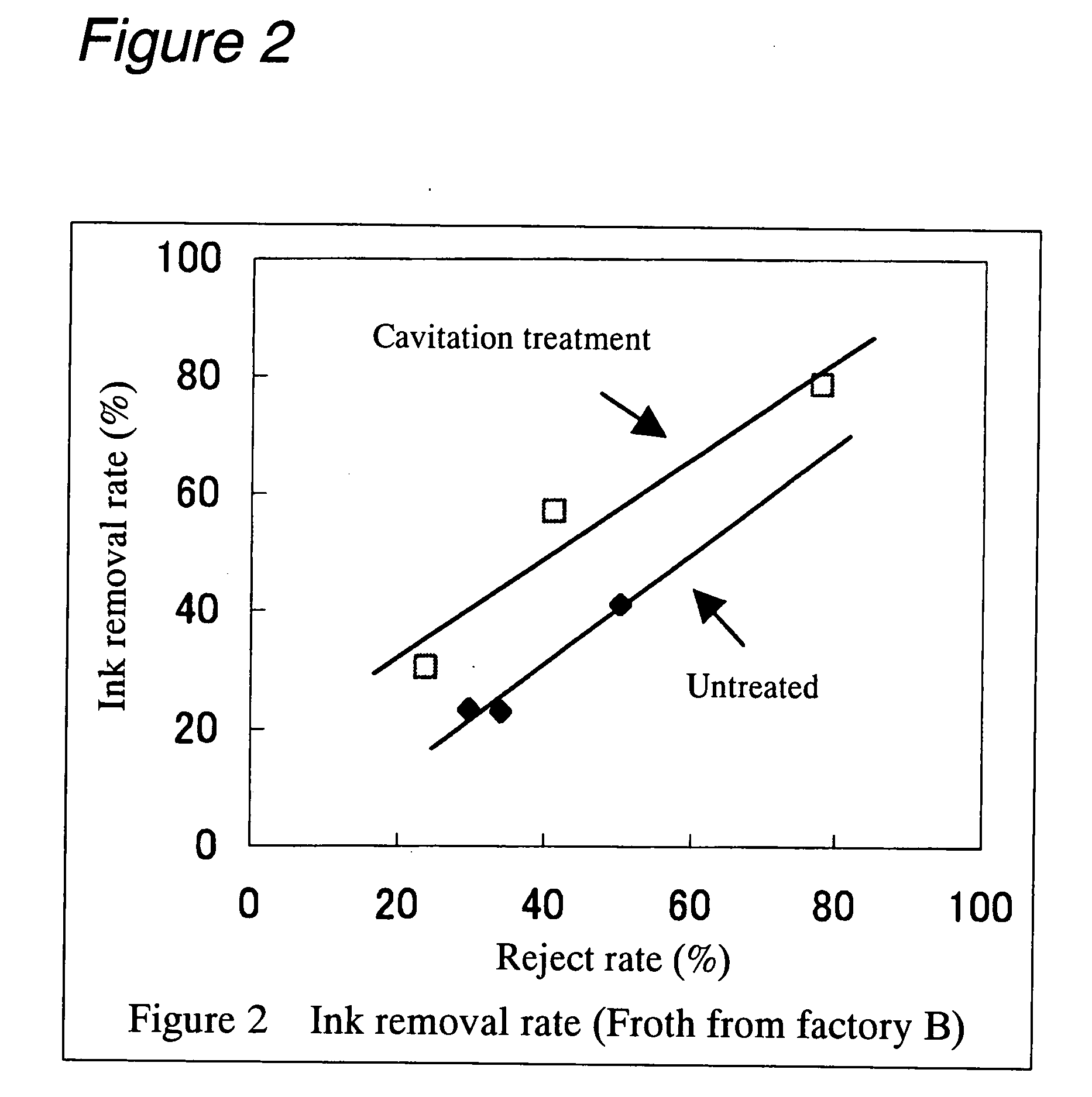Methods for Beating Pulp, Methods for Treating Process Waters, and Methods for Producing Pulp and Paper
a technology of process water and pulp, which is applied in the field of beating pulp and making printing papers, can solve the problems of deterioration of quality, runnability and product quality, and decrease in yield, and achieve the effects of reducing the adhesion of contaminants, reducing the number of microorganisms, and efficient separation
- Summary
- Abstract
- Description
- Claims
- Application Information
AI Technical Summary
Benefits of technology
Problems solved by technology
Method used
Image
Examples
examples
Examples of the First Invention
[0103] The following examples further illustrate the present invention without, however, limiting the invention thereto.
examples 1-4
[0104] A commercially available bleached hardwood kraft pulp sheet was disintegrated in a low consistency pulper to prepare raw material A (freeness 666 ml CSF). Raw material A was adjusted to a desired consistency, and then treated in a cavitation jet washer (nozzle diameter 1.5 mm) shown in FIG. 1 at a jetting liquid pressure (upstream pressure) of 7 MPa (jet flow rate 70 m / sec.) and a pressure in the target vessel (downstream pressure) of 0.3 MPa for varying periods to modulate the freeness. A pulp suspension having a consistency of 1.1% by weight was used as a jetting liquid to treat the pulp suspension (consistency 1.1% by weight) in the vessel by cavitation. The treated pulp was tested for water retention value, screen analysis, and Canadian Standard Freeness (CSF), and the results are shown in Table 1. [0105] Water retention value: determined according to J. TAPPI No. 26. [0106] Screen analysis: determined according to JIS P 8207: 1976. [0107] Canadian Standard Freeness (CSF)...
examples 5-8
[0125] Raw material B consisting of thermomechanical pulp of Pinus radiata having undergone secondary refining by a practical factory machine (freeness 288 ml CSF) was treated in a cavitation jet washer in the same manner as described in Example 1 at a jetting liquid pressure (upstream pressure) of 7 MPa (jet flow rate 70 m / sec.) and a pressure in the target vessel (downstream pressure) of 0.3 MPa for varying periods to modulate the freeness. The resulting pulp was tested for water retention value, screen analysis and Canadian Standard Freeness and the results are shown in Table 4. Then, handsheets were prepared in the same manner as described in Example 1 and tested for similar items, and the results are shown in Tables 5 and 6.
PUM
| Property | Measurement | Unit |
|---|---|---|
| Percent by mass | aaaaa | aaaaa |
| Volume | aaaaa | aaaaa |
| Volume | aaaaa | aaaaa |
Abstract
Description
Claims
Application Information
 Login to View More
Login to View More - R&D
- Intellectual Property
- Life Sciences
- Materials
- Tech Scout
- Unparalleled Data Quality
- Higher Quality Content
- 60% Fewer Hallucinations
Browse by: Latest US Patents, China's latest patents, Technical Efficacy Thesaurus, Application Domain, Technology Topic, Popular Technical Reports.
© 2025 PatSnap. All rights reserved.Legal|Privacy policy|Modern Slavery Act Transparency Statement|Sitemap|About US| Contact US: help@patsnap.com



